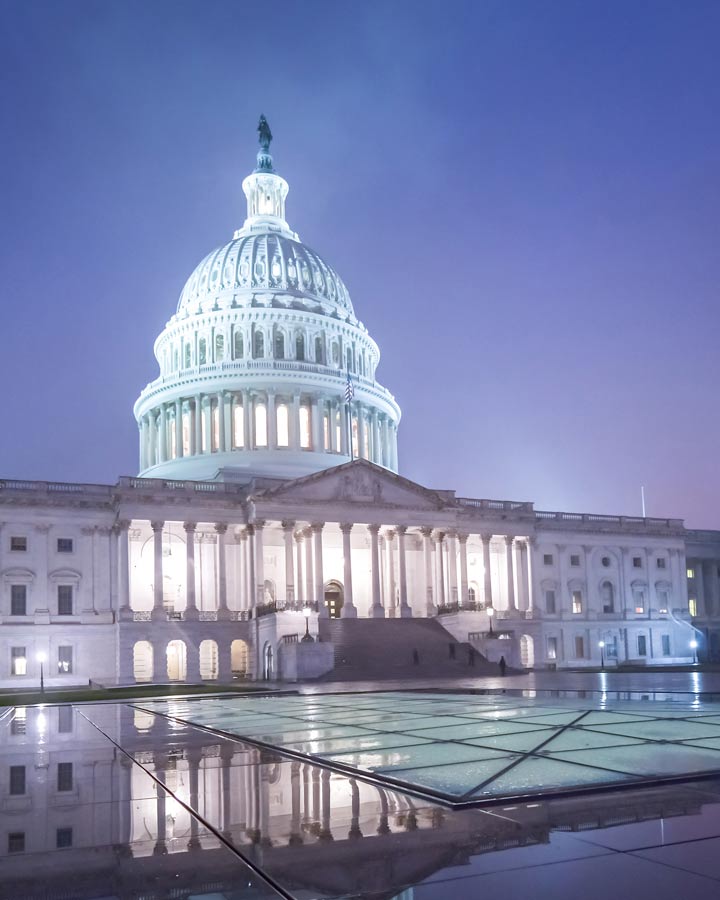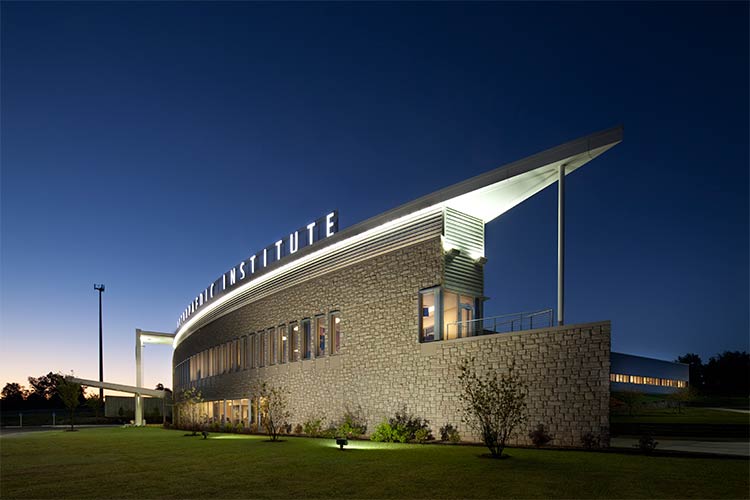The finances of hospitals, long-term care facilities, and medical practices have been adversely impacted by the coronavirus pandemic. Opportunities for loans, grants, and mechanisms to stabilize cash flows are important elements in the federal government’s response to date. ERDMAN is monitoring these efforts and will periodically issue updates as new information is available.
Appropriations by the Federal Government
On March 27, 2020, the “Coronavirus Aid, Relief, and Economic Security (CARES) Act” passed Congress, providing $2.2 trillion in emergency relief to businesses and individuals. It includes special provisions for “eligible health care providers,” a broad range of health care providers and suppliers that includes hospitals, physician practices, skilled nursing facilities, home health care agencies, hospices, and any other organization that “provide diagnoses, testing, or care for individuals with possible or actual cases of COVID-19.”
On April 24, the “Paycheck Protection Program and Health Care Enhancement Act,” a.k.a. “Phase 3.5,” passed, authorizing $484 billion to supplement key programs under the CARES Act, including the Paycheck Protection Program (PPP), small business disaster loans and grants, hospital and health care provider services and testing.

And, this week, Congress is set to authorize a fourth major emergency funding package that’s expected to help sectors in the economy not authorized in the first three.
ERDMAN is monitoring these programs to assist its clients in managing through these difficult times. The following is a primer on funding and tax abatement programs of special importance to hospitals, nursing homes, outpatient clinics, and physician practices:
Grants to Provide Immediate Relief to Healthcare Providers
Public Health and Social Services Emergency Fund
The $100 billion grant authorization is available to “All facilities and providers that received Medicare Fee-for-Service (FFS) reimbursements in 2019.” Grants may be used “for building or construction of temporary structures, leasing of properties, medical supplies, and equipment, including personal protective equipment and testing supplies, increased workforce and training, emergency operation centers, retrofitting facilities, and surge capacity.” The funds may not be used to “reimburse expenses or losses that have been reimbursed from other sources or that other sources are obligated to reimburse.” The bill directs the Department of Health and Human Services (HHS) to administer the funding through grants or other mechanisms, “in consideration of the most efficient payment systems practicable to provide emergency payment.” Providers must submit applications that include justification for the funding to be reviewed on a rolling basis.
On April 10, 2020, HHS announced the immediate disbursement of the first $30 billion of the $100 billion authorized in the CARES Act as grants to hospitals, medical practices, and other health care providers based on their share of Medicare Fee-for-Service spending ($484 billion in 2019). Then, on April 20, the agency announced disbursement for the next $20 billion from the fund has begun, “proportional to providers’ share of 2018 net patient revenue.” These grants may be used either for health care related expenses or for lost revenues that are attributable to the impact of coronavirus. Recipients are required to attest to certain terms and conditions within 30 days of receiving their grant, including agreement not to seek collection of out-of-pocket payments from a presumptive or actual COVID-19 patient that are “greater than what the patient would have otherwise been required to pay if the care had been provided by an in-network provider.”
Loans/Subsidies that Offset Disruption of Business as a Direct Result of the Coronavirus
The CARES Act established or expanded loan programs intended to provide liquidity to businesses, including physician practices, hospitals, independent outpatient/diagnostic clinics, home care agencies, nursing homes, and medical practices:

Paycheck Protection Program
The PPP allows a small business with fewer than 500 employees to apply to a Small Business Association-approved lender for a loan of up to 250 percent of the business’ average monthly payroll costs to cover eight weeks of payroll, as well as help with other expenses like rent, mortgage payments, and utilities. The maximum loan amount is $10 million, which can be forgiven based on maintaining minimum employee and salary levels. For any portion that is not forgiven, the terms include a maximum term of 10 years and a maximum interest rate of 4 percent.
This program is retroactive to February 15, 2020 and available through June 30, 2020. All current SBA 7(a) lenders are eligible lenders for PPP, and the Department of Treasury will also oversee authorizing new lenders. Note: “a hospital that is otherwise eligible to receive a PPP loan as a business concern or nonprofit organization (described in section 501(c)(3) of the Internal Revenue Code of 1986 and exempt from taxation under section 501(a) of such Code) shall not be rendered ineligible for a PPP loan due to ownership by a state or local government if the hospital receives less than 50 percent of its funding from state or local government sources, exclusive of Medicaid.”
Emergency Economic Injury Disaster Loans (EIDL)
Companies including provider organizations with not more than 500 employees are eligible for an “emergency” EIDL, which is a lower interest loan of up to $2 million with principal and interest deferment up to four years. EIDL is targeted to fund operating expenses that could have been met had the coronavirus not occurred, including payroll and other operating expenses. An eligible entity that has applied for an EIDL loan can request an advance on that loan, of not more than $10,000, which the SBA must distribute within three days. Advance payments may be used for providing paid sick leave to employees, maintaining payroll, meeting increased costs to obtain materials, making rent or mortgage payments, and repaying obligations that cannot be met due to revenue losses. Note: operators are eligible to participate in both the PPP and EIDL programs, so long as the losses for which the loans are based are not duplicative.
Small Business Debt Relief Program
This program provides immediate debt relief to small businesses with non-disaster SBA loans, and microloans. SBA will cover all payments on these loans, including principal, interest and fees, for six months. New borrowers are eligible for this relief if they take out loans within six months of the president signing the law.
Coronavirus Economic Stabilization Act (CESA) Main Street Lending Program
Low interest loans, loan guarantees and subsidies for businesses between 500 and 10,000 employees for losses incurred as a result of coronavirus. The interest rate has an annualized rate capped at 2 percent and with no principal or interest due for at least six months. The loans are not eligible for loan forgiveness. In the CARES Act, $454 billion is set aside for this program. Notable eligibility requirements of special significance to healthcare organizations include:
- Funds must be used to retain at least 90 percent of the recipient’s workforce as of February 1, 2020, at full compensation and benefits, until September 30, 2020.
- The entity or business must be domiciled in the United States with significant operations and employees located in the United States.
- The recipient is not a debtor in a bankruptcy proceeding.
- While any principal on the loan is outstanding, the organization is precluded from paying dividends to its shareholders or using its equity to do a transaction or stock repurchase.
- The recipient will not outsource or offshore jobs or abrogate existing collective bargaining agreements for the term of the loan and two years after completing repayment of the loan.
- Companies must remain neutral in any union organizing effort for the term of the loan.
- Executive compensation limits: No officer or employee earning more than $425,000 in 2019 can receive a pay increase or severance upon termination exceeding twice the maximum compensation received in 2019 and no officer or employee whose 2019 total compensation exceeded $3 million may receive total compensation in excess of $3 million and 50 percent of the excess over $3 million that they received in 2019, including salary, bonuses, awards of stock, and other financial benefits.
TAX CREDITS/PAYMENT PROVISIONS BENEFICIAL TO PROVIDERS
In addition to the funding sources above, the CARES Act includes changes to taxes and tax policies that could benefit healthcare organizations:
- Employee retention tax credits if the practice’s business operations were fully or partially suspended due to a COVID-19 shutdown order
- Eligible businesses can get a refundable 50 percent tax credit on wages up to $10,000 per employee if gross receipts declined by more than 50 percent compared to the same quarter in the prior year. The credit can be obtained on wages paid or incurred from March 13, 2020, through Dec. 31, 2020.
- Deferred payment of the employer portion of certain payroll taxes through the end of 2020, with all 2020 deferred amounts due in two equal installments, one at the end of 2021 and the other at the end of 2022.

- Temporary elimination of Medicare sequestration from May 1 through Dec. 31, 2020. This applies to all Medicare providers, but is especially impactful for Critical Access Hospitals (CAHs), who had been receiving 99 percent — rather than 101 percent — of allowable costs during sequestration.
- Expanded option for accelerated payments will be expanded to CAHs, children’s and cancer hospitals. These providers, along with acute care hospitals, may request accelerated payments that cover a time period of up to six months. The amount of payment is up to 125 percent for CAHs (up to 100 percent for other providers) of what the hospital would have otherwise received, and payment could be made periodically or as a lump sum. The bill stipulates that hospitals will have up to 120 days until their claims are offset to recoup the funds, and at least 12 months before being required to pay any outstanding balance in full. Note: On March 28th, the accelerated payment program was extended to other Medicare providers and suppliers impacted by COVID-19, which includes skilled nursing facilities and others that provide Medicare-reimbursable services. For most non-hospital providers, the accelerated payments are limited to a 3-month advance of Medicare payments (not the 6 months provided to hospitals) and advances must be recouped within 210 days (not the 120 days provided to hospitals). However, it allows the receiving non-hospital provider to request up to 100 percent of the advanced reimbursement and 12 months to repay the advance. After submission of a request by the provider to the Medicare Administrative Contractor (MAC), the MAC will strive to cause the payment to be issued within seven days of such requests.
- Inpatient Prospective Payment System (IPPS) Add-on Payment. During the emergency period, the legislation provides a 20 percent add-on to the diagnosis related group rate for patients with COVID-19. This add-on will apply to patients treated at rural and urban inpatient IPPS hospitals to address the high costs associated with COVID-19 patient care.
- Section 3711 of the CARES Act provides flexibility for post-acute care providers to increase their capacity during the emergency period by waiving the rule for inpatient rehabilitation facilities that requires a patient to be in three hours of inpatient rehabilitative therapy, five days per week or 15 hours of rehabilitation therapy over a week. Section 3711 also waived the site neutrality rules for Long Term Care Hospitals (LTCHs) whereby Medicare reimburses LTCHs for certain intensive care unit and coronary care unit patients and patients who received at least 96 hours of ventilator services in the LTCH.
Much of the $50 billion made available to date has been directed to hospitals: the allocations of the remaining $125 million authorized for eligible providers is likely be defined by criteria that expand opportunities for medical practices and long-term care facilities
Programs that Address Community Health
The CARES Act also include funding through several federal departments for community-based services in which participation by hospitals and medical groups is key. Given growing recognition that social determinants of health are predictive of health status and the disproportionate proportion of African American fatalities in the coronavirus pandemic, opportunities exist to collaborate with local public health and school systems to advance efforts to coordinate care.
- Child Care and Development Block Grants: $3.5 billion for (1) state, territory, and tribal general revenue funds for child care assistance; (2) financial support to child care providers in the case of decreased enrollment or closures; and (3) child care assistance to health care sector employees, emergency responders, sanitation workers, and other workers deemed essential.
- Child Welfare Services: $45 million for grants to states to support the child welfare needs of families and to help keep families together.
- Family Violence Prevention and Services: $45 million to provide additional support to family violence shelters and $2 million in additional support for the National Domestic Violence Hotline.
- Runaway and Homeless Youth Program: $25 million for additional immediate assistance to current programs providing critical services and housing for runaway and homeless youth.
- Head Start: $750 million for grants to all programs to help them respond to needs of children and families, including making up for lost learning time.
- Summer Programming: $500 million operating supplemental summer programs through non-competitive grant supplements to existing grantees.
- Certified Community Behavioral Health Clinics: $250 million to increase access to mental health services in communities.
- Emergency Response Grants: $100 million in flexible funding to address mental health, substance use disorders, and provide resources and support to youth and the homeless.
- Suicide Prevention: $50 million to provide increased support for those most in need of intervention.
- Administration for Community Living: $955 million for aging and disability services programs including senior nutrition, home and community-based support services, family caregivers, elder justice, and independent living.
- Federal Communications Commission
- Telehealth Initiatives: $200 million to support the efforts of health care providers by providing telecommunications services, information services, and devices necessary to enable the provision of telehealth services.
- Education Stabilization Fund: $30.8 billion to address basic needs of students, transition to online learning, and support college students experiencing increased costs and challenges (e.g., housing and food) due to closed campuses.
- $13.5 billion to state education agencies (SEAs) for grants to local education agencies (LEAs). SEAs must allocate funds to LEAs based on the relative share of federal Title I funding they received last year. Funds can be used for a variety of K-12 purposes including purchasing educational technology to support online learning; supporting mental health; afterschool and summer programming; and making up for lost learning time.
- Project SERV (School Emergency Response to Violence): $100 million to supplement funds otherwise available for Project SERV to help clean and disinfect affected schools and to address the impact of this emergency on students, including their mental health.
- Supplemental Nutrition Assistance Program (SNAP): $15.81 billion to provide additional funding for SNAP to cover waiver authorities granted in H.R. 6201 and anticipated increases in participation. Provides $15.51 billion to cover anticipated increases in participation as a result of COVID-19; $100 million for food distribution on Indian reservations; and $200 million for grants to the territories for nutrition assistance.
- Child Nutrition Programs: $8.8 billion to ensure children receive meals while school is not in session. National School Lunch Program, the School Breakfast Program, the Special Milk Program, the Child and Adult Care Food Program, and the Summer Food Service Program are included.
- Distance Learning, Telemedicine, and Broadband Program: $25 million to help improve distance learning and telemedicine in rural areas of America.
- The Emergency Food Assistance Program: $450 million for additional commodities, $150 million of which may be used to distribute emergency food assistance via community partners.
- Community Development Block Grant: $5 billion for CDBG to provide communities and states with funding to provide a wide range of resources such as services for senior citizens, the homeless, and public health services and funds for community health facilities, childcare centers, and food banks.
- Rental Assistance Protections for Low-Income Americans: $3 billion to support Public Housing Agencies to keep 3.2 million Section 8 voucher and public housing individuals and families housed.
- Emergency Solutions Grants: $4 billion to address the impact of COVID-19 among individuals and families who are homeless or at risk of homelessness and to support additional homeless assistance, prevention, and eviction prevention assistance. Eviction prevention activities including rapid rehousing, housing counseling, and rental deposit assistance to mitigate the adverse impacts on working families.
- Housing for the Elderly: $50 million to maintain housing stability and services for low-income seniors, who are at particular risk of contracting COVID-19.
- Housing for Persons with Disabilities: $15 million to make up for reduced tenant payments as a result of coronavirus.
- Emergency Food and Shelter Program: $200 million for shelter, food, and supportive services through local service organizations.
- Employment and Training Administration: $360 million, of which $345 million are for services for dislocated workers, seniors, migrant farmworkers, and homeless veterans.
What's Next
Congress is scheduled to return to DC the week of May 4th and authorization for a new round of funding is expected to be approved. It will likely include aid for front line responders (i.e. hazard pay/ student debt forgiveness), aid for state and local governments, relief for the oil and gas industry, nursing homes and additional relief for restaurants, small businesses, institutions of higher education, and direct aid payments to individuals and families.
ERDMAN Takeaway
Most of the loans/grants in the CARES Act and Paycheck Protection Program and Health Care Enhancement Act (Phase 3.5) calibrate to Covid-19 related costs, expenses and lost revenues which include from cancelled procedures, medical supplies, personal protective equipment testing, increased staffing, transportation costs et al.
Much of the $50 billion made available to date has been directed to hospitals: the allocations of the remaining $125 million authorized for eligible providers is likely be defined by criteria that expand opportunities for medical practices and long-term care facilities. Hospitals will garner the lion’s share of those funds, but other sectors will also be included.
For more information about how these funding sources and related provisions might impact your plans, ERDMAN Analytics can provide helpful insight.
- Alliance for Strong Families and Communities. (2020, Retrieved Apr. 28). “CARES Act summary: Key provisions for community based human
services organizations” https://alliance1.org/web/news/2020/march/cares-act-summary-key-provisions-community-based-human-servicesorganizations.aspx?gclid=EAIaIQobChMIwqrw8OaF6QIVyuDICh0Y-AaMEAMYAS - American Medical Association. (Apr. 24, 2020). “CARES Act/COVID 3.5: Loans & other financial assistance for physician practices.” https://www.ama-assn.org/delivering-care/public-health/cares-actcovid-35-loans-other-financial-assistance-physician
- “Novel Coronavirus (Covid 19) [Blog].”American Hospital Association https://www.aha.org/topics/novel-coronavirus-covid-19
- United States Department of Health and Human Services. (Apr. 28, 2020). “CARES Act Provider Relief Fund. https://www.hhs.gov/coronavirus/cares-act-provider-relief-fund/index.html



